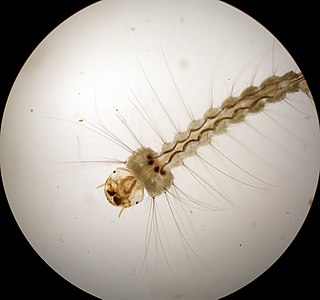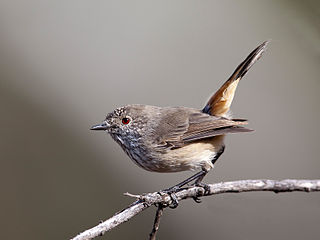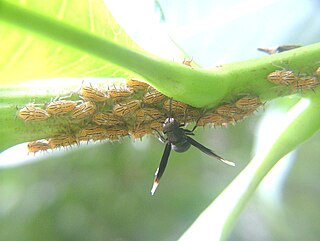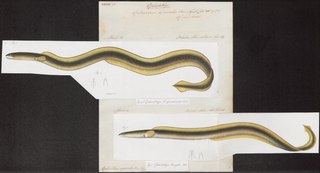
Edward Osborne WilsonForMemRS was an American biologist, naturalist, ecologist, and entomologist known for developing the field of sociobiology.
Sociobiology is a field of biology that aims to examine and explain social behavior in terms of evolution. It draws from disciplines including psychology, ethology, anthropology, evolution, zoology, archaeology, and population genetics. Within the study of human societies, sociobiology is closely allied to evolutionary anthropology, human behavioral ecology, evolutionary psychology, and sociology.
In biology, a monotypic taxon is a taxonomic group (taxon) that contains only one immediately subordinate taxon. A monotypic species is one that does not include subspecies or smaller, infraspecific taxa. In the case of genera, the term "unispecific" or "monospecific" is sometimes preferred. In botanical nomenclature, a monotypic genus is a genus in the special case where a genus and a single species are simultaneously described. In contrast, an oligotypic taxon contains more than one but only a very few subordinate taxa.

The dibbler is an endangered species of marsupial. It is an inhabitant of the southwest mainland of Western Australia and some offshore islands. It is a member of the order Dasyuromorphia, and the only member of the genus Parantechinus. The dibbler is a small, nocturnal carnivore with speckled fur that is white around the eyes.
The Andean rat, or white-tailed akodont, is the only species in the genus Lenoxus. It is a rodent in the tribe Akodontini found on the eastern slopes of the Andes of eastern Peru and western Bolivia. Examination of its genome shows that this species is not closely related to Oxymycterus as had previously been thought, but is quite distinct, having diverged from the other Akodontini soon after the basal radiation of the entire group.

In zoology, an inquiline is an animal that lives commensally in the nest, burrow, or dwelling place of an animal of another species. For example, some organisms, such as insects, may live in the homes of gophers or the garages of humans and feed on debris, fungi, roots, etc. The most widely distributed types of inquiline are those found in association with the nests of social insects, especially ants and termites – a single colony may support dozens of different inquiline species. The distinctions between parasites, social parasites, and inquilines are subtle, and many species may fulfill the criteria for more than one of these, as inquilines do exhibit many of the same characteristics as parasites. However, parasites are specifically not inquilines, because by definition they have a deleterious effect on the host species, while inquilines have not been confirmed to do so.

Treehoppers and thorn bugs are members of the family Membracidae, a group of insects related to the cicadas and the leafhoppers. About 3,200 species of treehoppers in over 400 genera are known. They are found on all continents except Antarctica; only five species are known from Europe. Individual treehoppers usually live for only a few months.

On Human Nature is a book by the biologist E. O. Wilson, in which the author attempts to explain human nature and society through sociobiology. Wilson argues that evolution has left its traces on characteristics such as generosity, self-sacrifice, worship and the use of sex for pleasure, and proposes a sociobiological explanation of homosexuality.

The inland thornbill was originally described by English ornithologist John Gould in The Birds of Australia. Inland thornbills are within the order passerines. The inland thornbill belongs to the genus Acanthiza, which now has three more species than the eleven outlined by Gould in The Birds of Australia. The Noongar people of southwestern Western Australia call A. apicalis "Djoobi-Djoolbang". The inland thornbill is also known as the broad-tail thornbill and presently contains several subspecies that were once considered independent species. The word apicalis comes from the Latin for 'tipped'.
Stratodus is a genus of giant prehistoric aulopiform fish found in Cretaceous-aged marine strata of Kansas, Alabama, Morocco, Israel, and Niger, South Dakota, Jordan. It has also been found in the Tamaguélelt Formation of Mali, dating to the Lower Eocene, indicating that Stratodus survived the Cretaceous-Paleogene extinction event. This sleek fish has an upper jaw filled with multiple rows of tiny teeth and was the largest aulopiform, reaching 5 meters in length.

Nectomys apicalis, also known as the western Amazonian nectomys, is a semiaquatic species of rodent in the genus Nectomys of family Cricetidae. It is found east of the Andes in Ecuador, Peru, and Bolivia, east into western Brazil; further to the east, it is replaced by N. rattus. It lives near watercourses in lowland tropical rainforest. Its karyotype has 2n = 38–42, and it probably actually represents several distinct undescribed species.

Parachartergus apicalis is a species of wasp in the Polistinae subfamily, found in the Neotropics. It was first described by Johan Christian Fabricius in 1804. In Honduras, they are known as alas blancas, which translates into English as "white wings".
Madaglymbus apicalis is a species of diving beetle. It is part of the genus Madaglymbus in the subfamily Copelatinae of the family Dytiscidae. It was described by Fairmaire in 1898. Madaglymbus apicalis is distributed along the coastlines of much of Africa.

The bluntnose snake eel is an eel in the family Ophichthidae. The author of the species is anonymous, but it has been referred to Edward Turner Bennett in 1830. It is a tropical, marine eel which is known from the Indo-Pacific, including Kenya, Madagascar, South Africa, Taiwan, Thailand, and the Philippines. It dwells at a maximum depth of 22 m, but also frequents shores. Males can reach a maximum total length of 45 cm.
Guancha apicalis was thought to be a species of calcareous sponge in the genus Guancha from Antarctica. It actually never existed.
Mesosa obscuricornis is a species of beetle in the family Cerambycidae. It was described by Maurice Pic in 1894, originally as a varietas of M. nebulosa. It is known from Iran, Azerbaijan, and Turkey.

Parachartergus is a genus of epiponine social wasps belonging to the subfamily Polistinae. Species include:

Latrunculia is a genus of demosponges. It is well known for the diverse array of chemical compounds found in its species, including the latrunculins, which are named after this genus. Many of these are medically important, including anti-cancer compounds such as discorhabdins.

Neoponera villosa, known generally as hairy panther ant, is a species of ant in the family Formicidae. Other common names include the greater Texas bullet ant and giant hunting ant.
Polyethism is the term used for functional specialization of non-reproductive individuals in a colony of social organisms, particularly insects. Division of labour is considered a key aspect of eusociality and can be seen in a variety of forms. In some insects, there are distinct morphological differences among the individuals that decide their function in the colony, and this is termed as caste or morphological polyethism and is associated with polymorphism. Functions of individuals within the colony that are identical in morphology may however vary in the tasks taken up with the age of the individuals. In some species riskier activities are taken up by older individuals. This is termed as age polyethism. Time- and season-related specialization may also be termed more generically as temporal polyethism. The mechanisms involved in the control of polyethism has been an area of intense research in the field of sociobiology.









